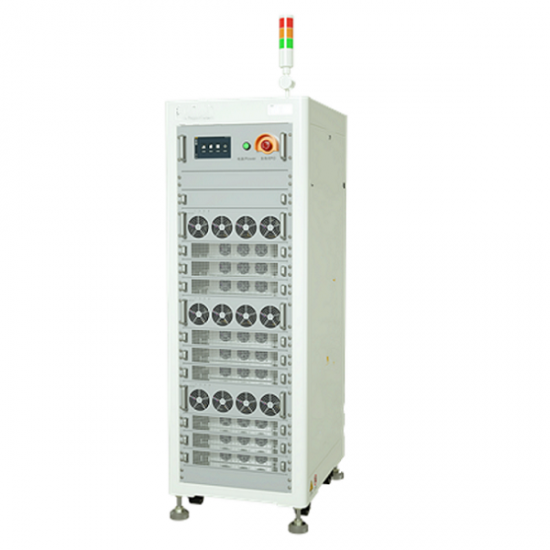Lith Corporation, founded in 1998 by a group of material science doctor from Tsinghua University, has now become the leading manufacturer of battery lab&production equipment. Lith Corporation have production factories in shenzhen and xiamen of China.This allows for the possibility of providing high quality and low-cost precision machines for lab&production equipment,including: roller press, film coater,mixer, high-temperature furnace, glove box,and complete set of equipment for research of rechargeable battery materials. Simple to operate, low cost and commitment to our customers is our priority.
What is an EV Car Battery Pilot Line?
An EV (Electric Vehicle) Car Battery Pilot Line is a scaleddown, flexible production system designed to develop, test, and validate battery technologies, processes, and equipment before fullscale mass production begins. It serves as a bridge between R&D and largescale manufacturing, allowing manufacturers to optimize cell and pack designs, refine manufacturing processes, and validate product performance under nearreal production conditions.
Pilot lines are essential for:
Technology validation – testing new battery chemistries, formats, or materials
Process development – refining electrode coating, stacking, welding, and assembly techniques
Equipment testing – evaluating machinery performance before scaling up
Quality assurance – identifying and correcting production issues early
Cost estimation – understanding production economics and resource requirements
These lines are commonly used by battery startups, automotive OEMs, research institutions, and suppliers entering the EV battery market.
Key Objectives of an EV Battery Pilot Line
1. Technology Validation
Test new battery chemistries (e.g., NMC 811, LiFePO₄, solidstate)
Evaluate novel materials (e.g., silicon anodes, highnickel cathodes)
Assess cell formats (cylindrical, pouch, prismatic)
2. Process Development and Optimization
Refine coating, drying, calendaring, and slitting processes
Improve electrode stacking or winding accuracy
Validate welding, sealing, and electrolyte filling methods
3. Equipment Testing and Integration
Evaluate machinery performance (e.g., coating machines, laser welders)
Test automation and data collection systems
Ensure compatibility with future fullscale production lines
4. Product Performance and Safety Testing
Conduct formation, aging, and electrical testing
Perform safety tests (overcharge, short circuit, thermal runaway)
Validate thermal management and cooling system performance
5. Manufacturing Readiness Assessment
Estimate production yields, cycle times, and failure rates
Train production and engineering staff
Develop SOPs (Standard Operating Procedures) and quality control plans
Types of EV Battery Pilot Lines
Depending on the scope and focus, pilot lines can be categorized into two main types:
1. CellLevel Pilot Line
Focuses on battery cell production (from electrode manufacturing to cell assembly and testing)
Ideal for validating new cell chemistries, manufacturing processes, and equipment
Includes all key steps of a fullscale cell line but at a lower throughput
2. Module/PackLevel Pilot Line
Focuses on battery module and pack assembly
Validates electrical integration, cooling system design, BMS integration, and pack sealing
Often used by automotive OEMs and pack integrators to test new pack designs before fullscale production
Key Stages in an EV Battery Pilot Line
A full EV battery pilot line typically includes both celllevel and module/packlevel stages, though it may focus on one depending on the application.
1. CellLevel Pilot Line Process
a. Electrode Manufacturing
# i. Slurry Preparation
Mixing of cathode/anode materials with binders and solvents
Ensures uniform dispersion and viscosity
Allows testing of new formulations or suppliers
# ii. Coating
Applying slurry onto current collectors (aluminum for cathode, copper for anode)
Slotdie coating is most common
Pilot lines may use benchscale or semiautomated coaters
# iii. Drying & Calendering
Removing solvents in drying ovens
Adjusting electrode density and thickness through calendering
# iv. Slitting
Cutting coated electrodes into strips of desired width
Allows testing of different electrode designs and tolerances
b. Electrode Stacking or Winding
Stacking for prismatic and pouch cells
Winding for cylindrical cells
Precision is critical to ensure uniform electrochemical performance
c. Cell Assembly
# i. Casing Insertion
Inserting electrode stack or jellyroll into the casing
Testing different casing materials and designs
# ii. Tab Welding
Connecting electrode tabs to terminals using laser welding
Allows evaluation of weld strength and electrical contact
# iii. Electrolyte Filling
Filling the cell with electrolyte in a dry room environment
Enables testing of different electrolyte formulations
# iv. Sealing
Hermetically sealing the cell
Ensures longterm reliability and safety
d. Formation and Aging
Initial charge/discharge cycle to activate the cell
Stabilizes internal chemistry and forms the SEI layer
e. Testing and Sorting
Measuring voltage, internal resistance, and capacity
Sorting cells based on performance
Identifying processrelated issues early
Lithium Battery Testing Equipment
2. Module/PackLevel Pilot Line Process
a. Cell Inspection and Handling
Incoming inspection of voltage, capacity, and physical condition
Matching cells for uniform performance
Cleaning and labeling for traceability
b. Module Assembly
# i. Cell Stacking
Arranging cells into module configurations
Testing different mechanical layouts and thermal management strategies
# ii. Busbar Welding
Connecting cells electrically using laser welding
Validating weld quality and repeatability
# iii. TIM Application
Applying thermal interface material between cells and cooling plates
Evaluating different TIM materials and dispensing methods
# iv. Module Housing Installation
Enclosing the module in protective trays
Testing mechanical fit and structural integrity
c. Pack Integration
# i. Module Insertion
Placing modules into the battery enclosure
Testing different pack layouts and configurations
# ii. BMS Installation
Mounting and connecting the Battery Management System
Validating communication with vehicle systems
# iii. Cooling System Installation
Installing liquid cooling plates or air ducts
Testing thermal performance under simulated conditions
# iv. Wiring and Harness Connection
Routing highvoltage cables and CAN communication lines
Ensuring proper routing and insulation
# v. Final Sealing
Closing and sealing the battery enclosure
Performing leak tests for liquidcooled packs
Final Testing and Validation
Before moving to fullscale production, the battery cells and packs undergo rigorous testing to ensure performance, safety, and durability.
Tests Conducted:
Electrical Performance Testing – voltage balance, insulation resistance
Functional Testing – BMS calibration, communication with vehicle ECU
Thermal Performance Testing – heat distribution and cooling efficiency
Safety Testing – overcurrent, short circuit, thermal runaway protection
Environmental Aging – exposure to vibration, temperature extremes, humidity
Supporting Systems in an EV Battery Pilot Line
To ensure accurate data collection and process validation, several supporting systems are integrated:
1. MES (Manufacturing Execution System)
Tracks every step of the pilot process
Ensures full traceability from raw materials to finished packs
Supports process optimization and root cause analysis
2. Clean Room and Dry Room Environments
Maintains low humidity (<1% RH) and particulatefree air
Essential for electrode coating and cell sealing
3. Fire Suppression and Safety Systems
Protects personnel and equipment from thermal events
Includes gas suppression, fire detection, and emergency shutdown systems
4. Data Acquisition and Analytics
Realtime monitoring of process parameters
Helps identify trends and process variations
Enables predictive maintenance and optimization
Benefits of an EV Battery Pilot Line
Reduces risk by identifying technical and process issues early
Accelerates timetomarket through rapid iteration and validation
Enables innovation with testing of new chemistries, formats, and technologies
Improves process understanding before investing in fullscale production
Supports workforce training and SOP development
Facilitates supplier qualification and equipment selection
Provides data for investment decisions and scaleup planning
Design Considerations for an EV Battery Pilot Line
When setting up an EV battery pilot line, the following factors should be considered:
Scope – celllevel, module/packlevel, or both
Throughput – daily/monthly production volume (e.g., 1–10 MWh/year)
Flexibility – ability to test different cell formats and chemistries
Automation Level – manual, semiautomatic, or fully automatic
Space and Infrastructure – clean room requirements, power, ventilation
Integration with Testing Equipment – formation, aging, and performance test systems
Traceability and Data Systems – MES, data logging, and analytics tools
Safety and Compliance – fire suppression, explosionproof design, regulatory standards
Leading Companies Providing EV Battery Pilot Line Equipment
Several global companies offer pilot line solutions or key components:
KUKA Systems – Modular automation for battery assembly
B&R Industrial Automation (ABB) – Integrated automation platforms
Gree EnergyTech – Complete module and packlevel pilot line systems
Hanson Robotics – Smart battery manufacturing systems
Hyundai WIA – Specialized battery equipment
Trumpf, Coherent, IPG Photonics – Laser welding and sealing equipment
CATL, BYD, Panasonic, LG Energy Solution – Inhouse developed pilot systems
Need Help Setting Up or Optimizing Your EV Battery Pilot Line?
If you're looking to design, build, or optimize your EV battery pilot line, I can help you with:
Process Flow Design – from raw materials to final pack testing
Factory Layout Planning – space optimization and workflow analysis
Automation Strategy – selecting the right level of automation for your needs
Equipment Selection – recommending bestinclass machinery and suppliers
Cost Estimation – budget planning based on complexity and throughput
Customization Support – adapting the line to your specific battery chemistry or format
All you need to do is provide the following information:
Battery chemistry and format (NMC, LiFePO₄, cylindrical, pouch, prismatic)
Desired throughput (e.g., number of cells or packs per day/month)
Level of automation required (manual/semiauto/fullauto)
Target application (passenger cars, buses, energy storage, etc.)
Current factory space and infrastructure details




 Online service
Online service
